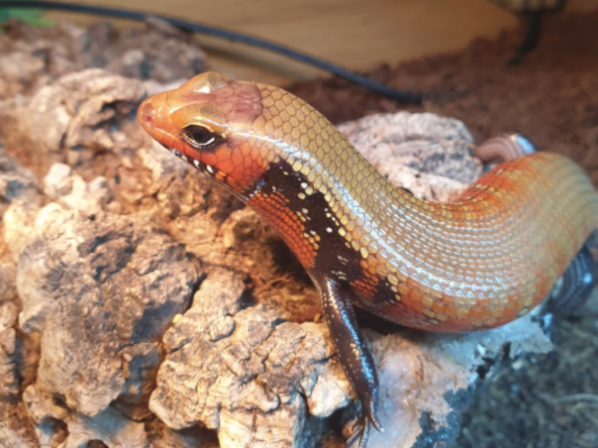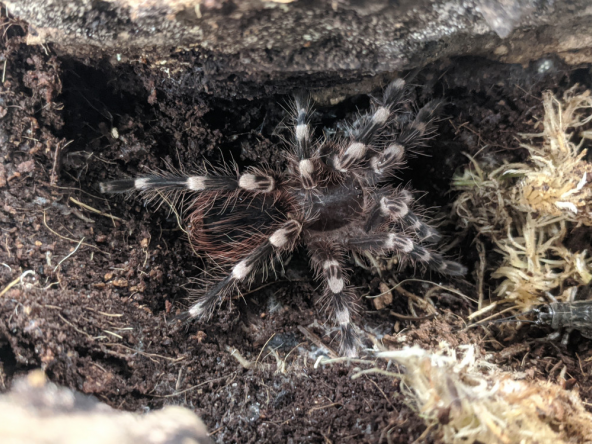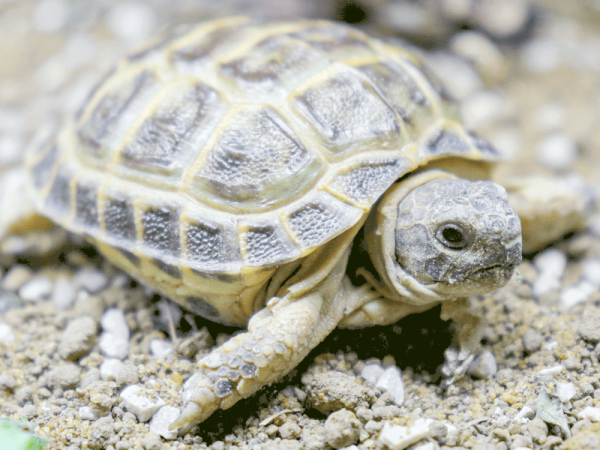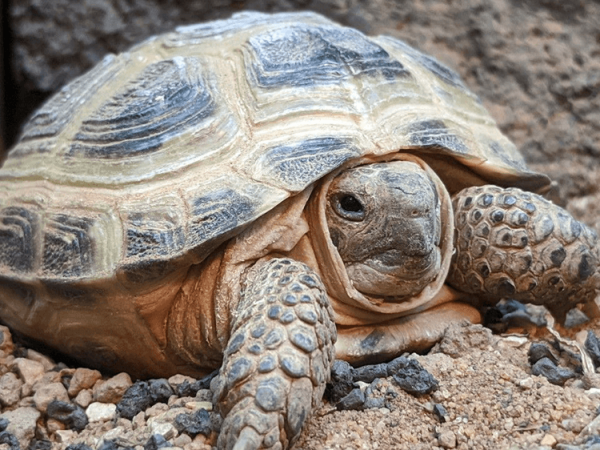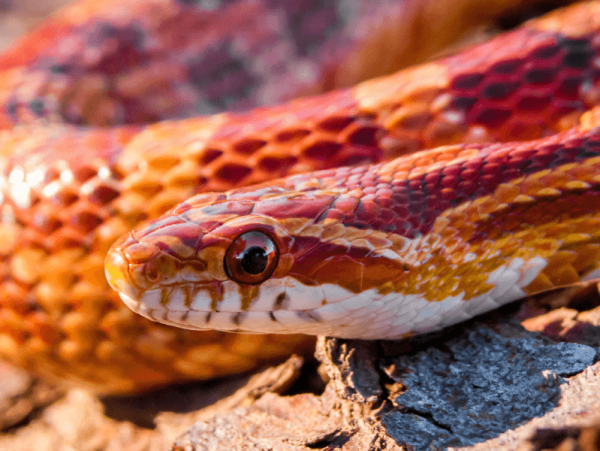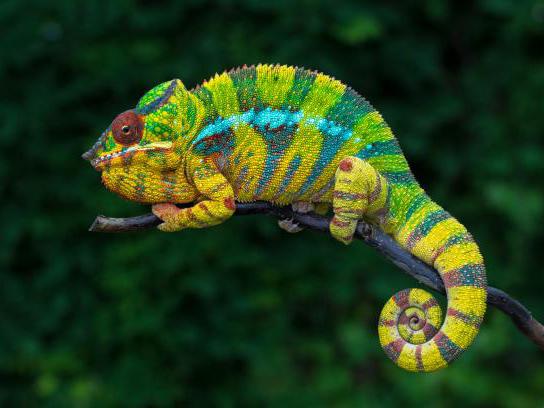Optional extras
Fire skink, Lepidothyris fernandi, care sheet
Categories: Care sheetsLizards
Fire skinks are so-called for their vivid red and orange colouration on their bodies, black patterns on the sides and legs and blue towards the tip of the tail. They are found in Western Africa where they inhabit woodland, grassland and forest habitats and are active during the day, so are an impressive and entertaining addition to a reptile collection. Though taming them down is possible in some circumstances, be prepared for a challenge as this species can be feisty, especially when young.
Housing
Fire skinks are a relatively active species, and are diurnal, which, along with their impressive colouration, can make them an interesting pet to watch. To provide them with enough space as an adult, a 4 x 2 x 2ft enclosure is recommended. The space should incorporate a deep, loose substrate such as a sand-soil mix, which will enable one of the most common behaviours of this skink - burrowing. Mixing sand and soil will mean that tunnels will hold better and there is better humidity control, though there may be other alternatives with similar qualities. It will also be important to provide good hiding opportunity on the surface, as well as logs, rocks, branches and a mixture of different foliage to ensure that the environment is enriching, and encouraging of activity to keep the animal both mentally and physically fit.
Heating and lighting
This skink requires a basking temperature of 35C, which is best reached with a basking bulb or ceramic heat emitter - either of which will need attaching to the relevant thermostat for temperature regulation and safety of your pet. The cooler end of the vivarium can sit between 22-25C. Ensuring the heat source is off to one side should be enough to form this gradient. During the night, temperatures can be allowed to drop to around 15C, which may not require additional heating, and this will then mimic the natural nighttime drop in the wild. Temperatures can be measured using a digital thermometer.
UVB lighting is a necessity, which and can be provided in a strip bulb such as a 6% - 12% T5 with reflector (this will be dependent on the distance away from the animal). This bulb will enable the metabolism of key nutrients to ensure healthy development and health maintenance. Without UVB there can be serious medical issues formed, and by having this bulb and replacing it regularly (lifespan is bulb dependent), it will ensure that such health risks are eradicated.
Humidity
This species will require a relative humidity of between 60-70% which can be reached using the addition of soil to drier substrate such as sand, and spraying the enclosure frequently. Humidity should always be measured with a digital hygrometer to ensure these levels aren't exceeded. A good sized water dish will assist humidity as well as provide a good opportunity for bathing and hydration. Water sources should be cleaned regularly to prevent bacterial build up.
Diet
The Fire Skink is an insectivore by nature, so in captivity it will feed on a variety of crickets, locusts, worms, snails and cockroaches. The occasional pinky mouse can also be offered as a good protein boost though this is a very occasional treat. Providing live food without tweezer feeding will encourage the natural hunting behaviours of your skink and give them a good opportunity for exercise. All live food will require dusting with a sufficient mix of calcium and multivitamins in a relevant rota to ensure the skink gets everything from the diet that is necessary for the maintenance of its health. Gut loading is also recommended to make live food more nutritious.
Species profile
- Scientific name - Lepidothyris fernandi
- Adult Size - 23 -38cm
- Habitat - forest, grassland and woodland habitats in Western Africa. Terrestrial living, burrowing amongst loose substrates.
- Enclosure Size - 4 x 2 x 2ft
- UV Lighting - 3-4 UVI (6% T5 - 30-40cm away / 12% T5 40-60cm away)
- Expected Lifespan - 15-20 years
- Temperature Gradient - 22 - 35C
- Humidity Levels - 60-70%
- Feeding - Insectivores - Live food such as crickets, locusts, worms, snails and cockroaches. Occasional pinky mice.
- Handling - Skittish and feisty, can be a challenge but can be tamed in some situations.
If you're interested in alternatives to the Fire skink, you can check out our Western Hognose Snake care guide.
Jeremy Gay is an author, lifelong fishkeeper, and exotic pet specialist. He's a former editor of Practical Fishkeeping Magazine, UK editor at Reefbuilders, a former pet store manager, and has collected wildlife in Sri Lanka and the Amazon. He's been on tv and radio, contributed to Koi Carp and Gardeners World magazines, been a product tester, a judge, and a product developer.




